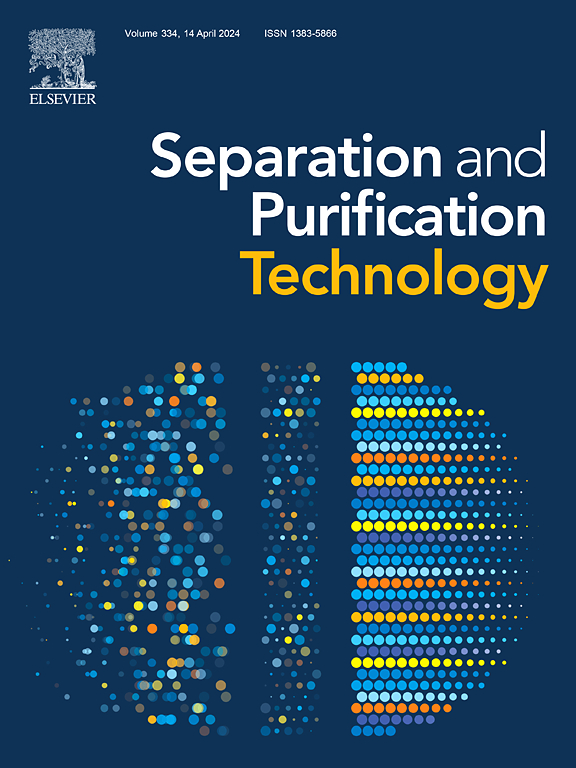光电催化与膜混合处理技术在废水中去除污染物的研究进展
IF 8.1
1区 工程技术
Q1 ENGINEERING, CHEMICAL
引用次数: 0
摘要
膜分离和光电催化(PEC)是一种有效的废水处理方法,可以有效地去除各种化学污染物。然而,这些工艺存在一些局限性,如PEC对溶解性有机污染物的降解能力不足和膜污染。本文综述了混合膜技术的最新进展,重点介绍了它们的协同作用机制、膜的过滤功能和性能优化策略。讨论了三个关键的PEC/RO配置,包括RO渗透物的后处理,RO浓缩物的处理以及RO辅助未降解污染物的回收。此外,对各种PEC/UF反应器设计进行了回顾,证明在优化条件下提高了染料,药物和盐度的去除效率。离子交换膜(IEMs)在提高离子选择性、电荷分离和污染物传输方面的作用也得到了强调,包括新型双极和三明治型膜结构。这些工程创新强调了pec -膜混合材料的多功能性和可扩展性,并为下一代可持续水处理技术提供了见解。为了指导未来的发展,还解决了诸如规模限制、膜耐久性和通量回收率等剩余挑战。本文章由计算机程序翻译,如有差异,请以英文原文为准。
Hybrid of photoelectrocatalysis and membrane processes as an efficient combination in pollutant removal from wastewaters: A review
Membrane separation and photoelectrocatalysis (PEC), as efficient methods for wastewater treatment, can effectively remove various chemical contaminants. However, these processes have some limitations for example insufficient degradation of dissolved organic pollutants by PEC and fouling of membrane. This review comprehensively summarizes recent progress in hybrid PEC-membrane technique, particularly focusing on their synergistic mechanisms, membrane functions beyond filtration, and performance optimization strategies. Three key PEC/RO configurations are discussed, including post-treatment of RO permeate, treatment of RO concentrate, and RO-assisted recycling of undegraded pollutants. Moreover, various PEC/UF reactor designs are reviewed, demonstrating improved removal efficiencies of dyes, drugs, and salinity under optimized conditions. The role of ion exchange membranes (IEMs) in enhancing ion selectivity, charge separation, and contaminant transport is also highlighted, including novel bipolar and sandwich-type membrane architectures. These engineering innovations underscore the versatility and scalability of PEC-membrane hybrids and offer insight into next-generation sustainable water treatment technologies. Remaining challenges such as scale-up limitations, membrane durability, and flux recovery are also addressed to guide future development.
求助全文
通过发布文献求助,成功后即可免费获取论文全文。
去求助
来源期刊

Separation and Purification Technology
工程技术-工程:化工
CiteScore
14.00
自引率
12.80%
发文量
2347
审稿时长
43 days
期刊介绍:
Separation and Purification Technology is a premier journal committed to sharing innovative methods for separation and purification in chemical and environmental engineering, encompassing both homogeneous solutions and heterogeneous mixtures. Our scope includes the separation and/or purification of liquids, vapors, and gases, as well as carbon capture and separation techniques. However, it's important to note that methods solely intended for analytical purposes are not within the scope of the journal. Additionally, disciplines such as soil science, polymer science, and metallurgy fall outside the purview of Separation and Purification Technology. Join us in advancing the field of separation and purification methods for sustainable solutions in chemical and environmental engineering.
 求助内容:
求助内容: 应助结果提醒方式:
应助结果提醒方式:


